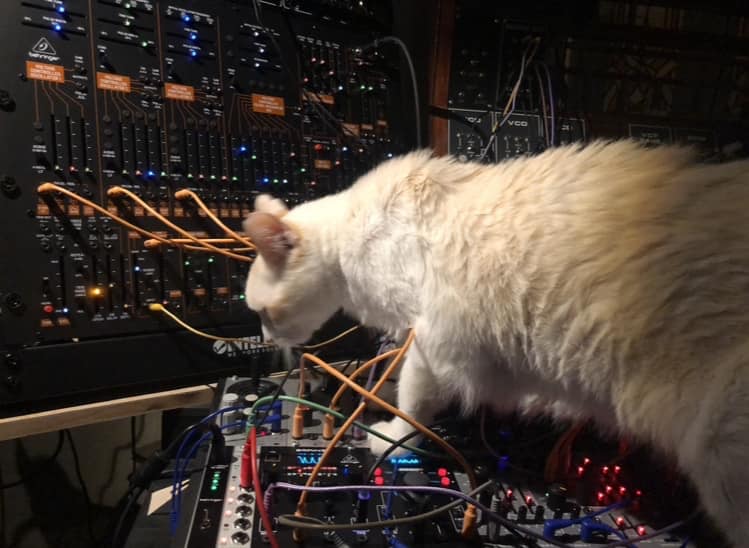
Rocky inspects the Behringer 2600 as he stands on a Eurorack modular system, which also includes modules from Behringer and others.
From Hans-Jürgen Podzun via the Eurorack Modular group on Facebook.

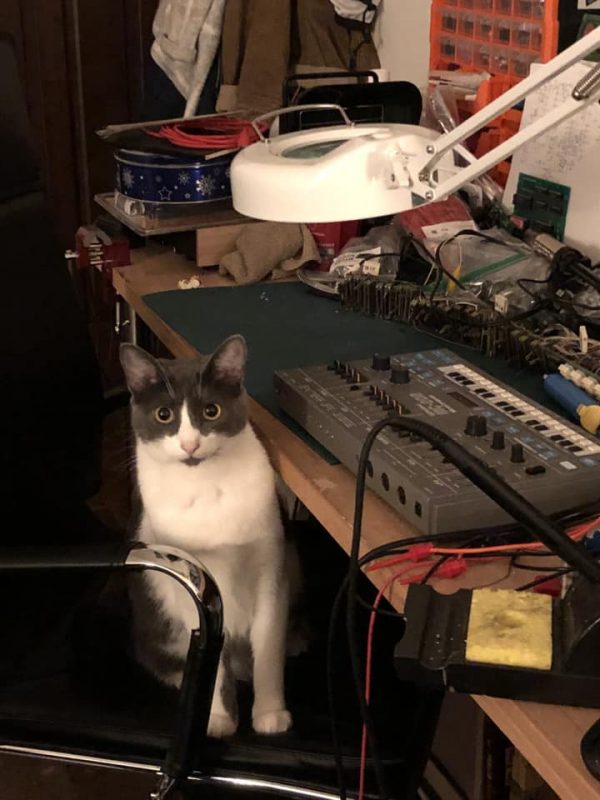
Gracie of Synthetic Dreamscapes is busy repairing this Roland MC-202. She does more than just quality assurance and “standing on everything they do”.
Submitted via our Facebook page.
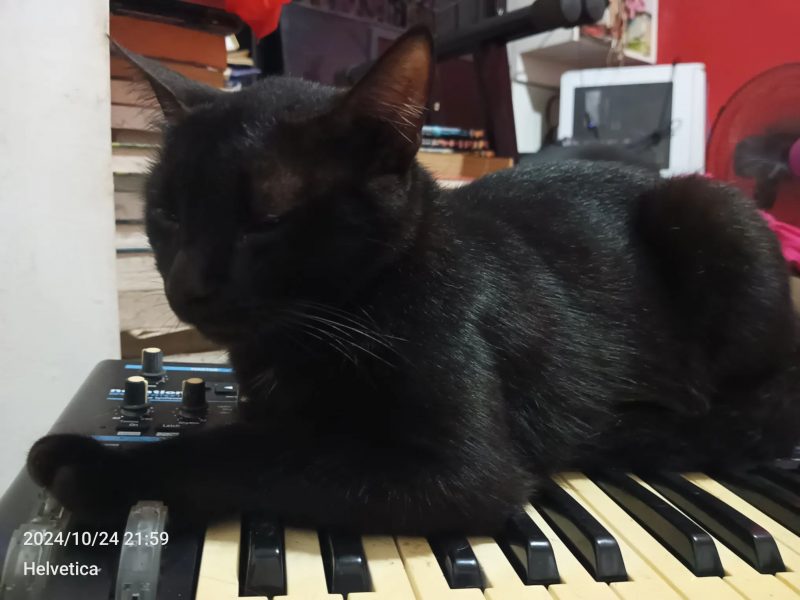
Tuna finds comfort and contentment atop a Novation Bass Station 2. Submitted by our friend @thedigitalpurrgatory via Threads.
It’s raining here where we are and Tuna is on the Novation Bass Station 2… For that analog warmth on a cold rainy night.

We came across this older photo of cats Pipo and Jojo with a Yamaha SK10 vintage string synthesizer on Wikimedia Commons. Pipo is playing and Jojo is listening.

This cat has a nice spot for resting about an Elektron Analog 4 (mk1); nearby we see a Moog Minitaur and Mother-32.
From audiographie via Instagram.
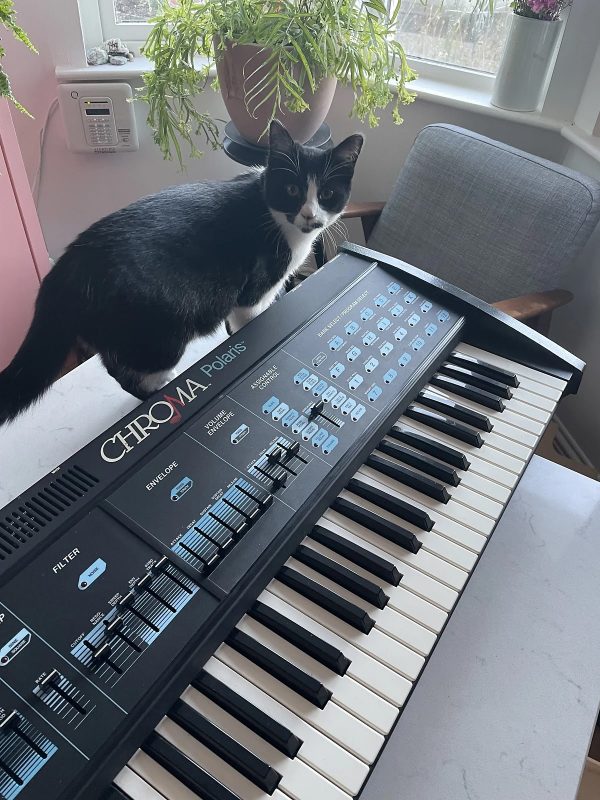
A beautiful cat stands behind the beautiful and underappreciated synthesizer, the Chroma Polaris.
From this Reverb listening, as seen on matrixsynth.
I have a soft spot for the Polaris, as it was the first synth I owned (on sale at Sam Ash in New York at a time when the DX7 was taking over). At the time, I didn’t fully appreciate how analog synthesis worked the way I do now – it would be great to play one again (and do a demo for CatSynth TV).
The cat reminds me a bit of our friend Gracie.
Jumar is quite relaxed as the Buchla modular purrs. Indeed, I think they are purring together!
Submitted by ghostcode on Instagram.
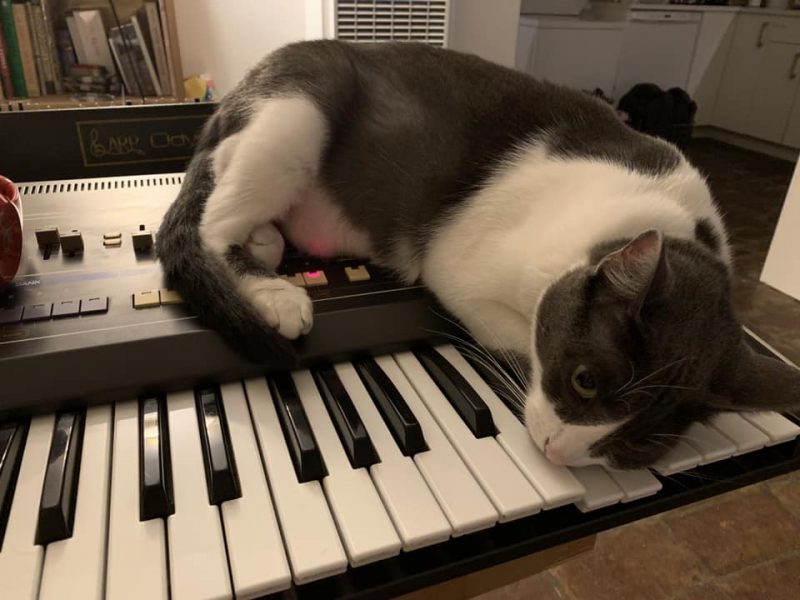
Gracie finds a comfortable napping spot atop a Roland Jupiter 6 synthesizer, and she plays us a drone at the same time.
Submitted by Alison and Gracie of Synthetic Dreamscapes via our Facebook page.
Our sweet from Olive jams on the Minimoog Voyager Electric Blue edition, and even sings a few notes for us at the end.